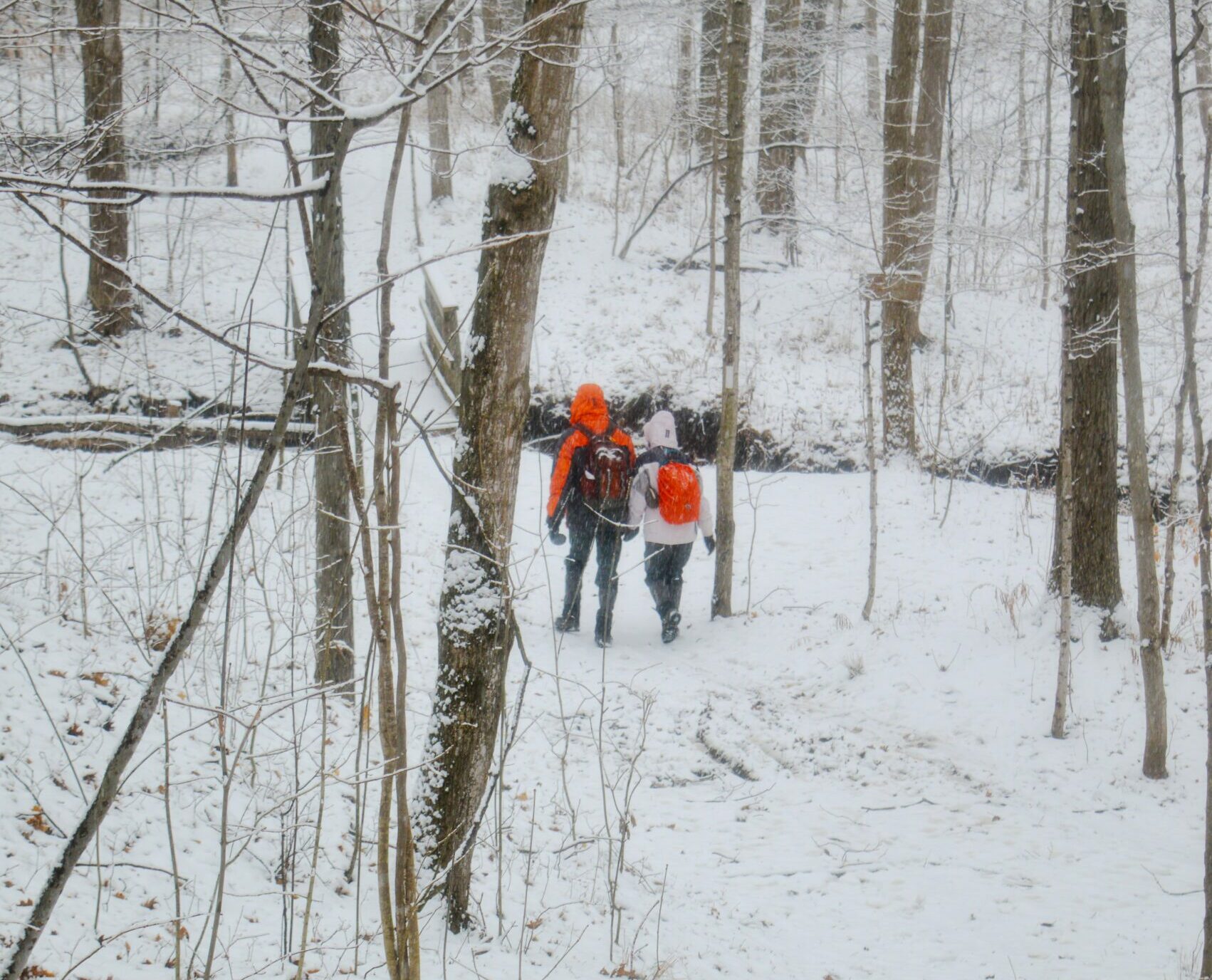Hiking in the Winter
Tips and tricks for hiking in winter weather
For many, winter is a time of hibernation. However, winter can be one of the best times to savour the great outdoors. We’ve gathered some tips and tricks to help you make the most of the season and explore the winter wonderland along the Niagara Escarpment.

Why hike in the winter?
Fewer crowds.
Winter’s chill keeps many indoors, resulting in fewer hikers on the Trail.
Beautiful scenery.
With the trees stripped of their leaves, the views from the Niagara Escarpment in the wintertime can be truly spectacular. Plus, it’s easier to spot elusive wildlife like deer and coyotes.
Great way to exercise in the colder months.
With many of our warm-weather hobbies on hold due to the weather, hiking can be a great way to stay active, in addition to being beneficial for our mental health.
No need to refrigerate snacks.
Cheese, yogurt, and veggies make great hiking snacks but often we have to worry about keeping them cool on longer hikes. In the winter, nature’s refrigerator keeps our food fresh.

Tips for hiking in the winter
Layer up.
Layers are the key to a successful winter hike. Equip yourself with a sweat-wicking layer, a layer for warmth, and a waterproof outer layer. And don’t forget to bring extra socks and gloves in your pack in case they get wet.
Choose good footwear.
Waterproof boots are essential to keep your feet warm and dry. Be sure to pack icers or crampons for added traction on slippery terrain.
Use hiking poles.
Consider using poles for added balance in icy spots and areas with deep snow.

Insulate your drink.
Staying hydrated is crucial, even in the cold. Using an insulated bottle or thermos will prevent your liquids from freezing. You can even put tea or broth in your thermos to stay hydrated with extra flavour.
Bring tissues.
Cold weather can cause runny noses. Do your gloves and shirt sleeves a favour by putting tissues in your pocket before heading out.

Winter hiking cautions
Parking may be limited.
Not all parking areas are maintained during the winter months. The Bruce Trail App and the Bruce Trail Reference Guide are useful tools to understand which parking areas are seasonal and find alternate options.
It gets dark early.
Be sure to check the sunset time before heading out and carry a headlamp in your pack just in case.

Be mindful of hidden hazards.
It’s important to keep in mind that hazards such as crevices and roots may be covered by snow when hiking. Always stay on the Trail and hike with caution.
Mind your hips.
Areas with deeper snow can be tough on the hips. Consider wearing snowshoes when snow is particularly deep.
Listen to your body.
Be aware that in the winter, especially in extreme cold temperatures, there is a risk of frost bite and hypothermia when spending time outdoors. Avoid these by wearing appropriate clothing and layers. Learn more about frostbite and hypothermia to prevent it.

